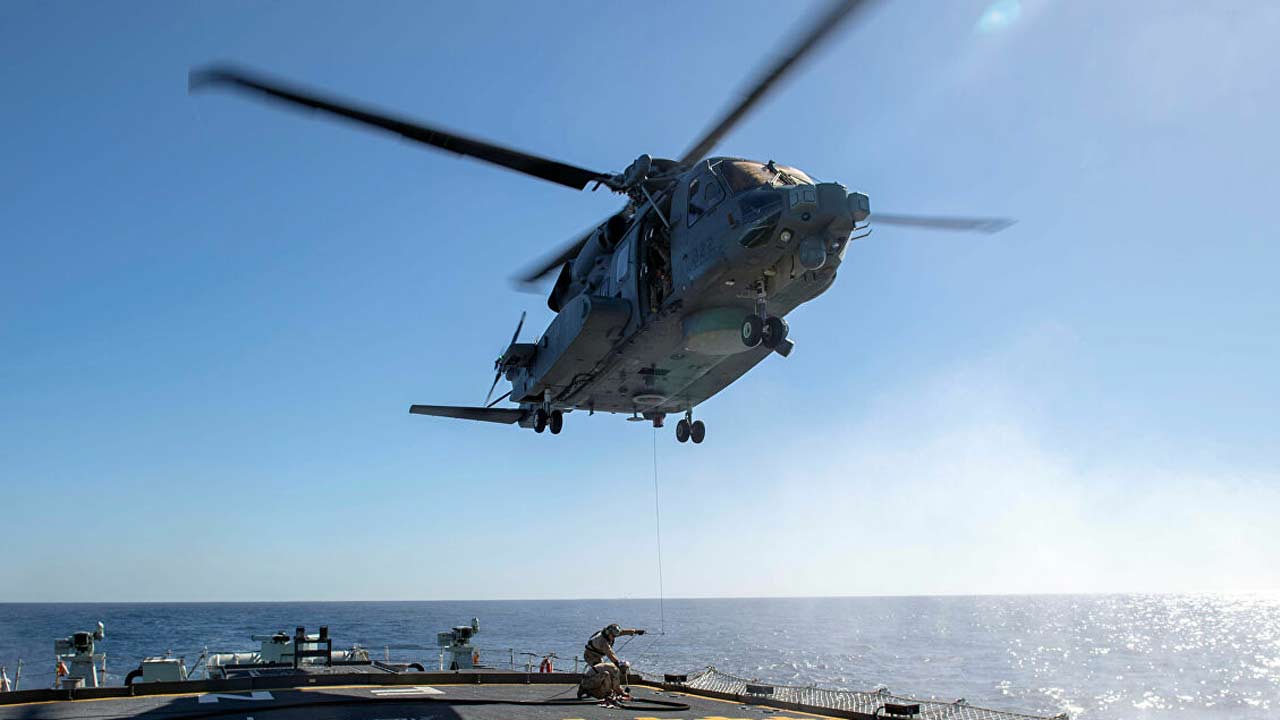A Canadian sailor’s body has been found amid the debris from a navy helicopter that crashed during a NATO operation in the sea between Greece and Italy, officials said Thursday.
Five other crew members from the Cyclone Sikorsky CH-148 helicopter are still missing.
It was returning to the Canadian warship HMCS Fredericton after a training mission when contact was lost on Wednesday evening.
“Yesterday, a Royal Canadian Navy helicopter on a NATO mission, carrying six members of the Canadian Armed Forces, went down with all hands in the Ionian Sea off the coast of Greece,” Prime Minister Justin Trudeau told a news conference in Ottawa.
“One casualty was recovered and five are missing,” he said.
A Greek military officer told AFP the debris had been found “in Italy’s zone of control and intervention,” specifying the wreckage belonged to the Canadian helicopter.
The Canadian frigate and submarine-hunting helicopter were 100 days into a NATO mission, aimed at deterring Russia.
More than 900 Canadian soldiers are deployed throughout Eastern Europe as part of Operation Reassurance – Canada’s largest current international military deployment.
Canadian Defence Minister Harjit Sajjan said the cause of the crash was “unknown,” but that an automatic beacon was located in the waters moments after contact was lost, and the helicopter’s cockpit voice and flight data recorders had since been recovered.
At the time of the accident the crew and allied ships were “not conducting surveillance or targeted operations on any particular vessel, adversary or otherwise”, Canada’s chief of the defence staff, General Jon Vance, said.
“We can’t rule anything out but I’m quite certain from a military situation, (the helicopter crash) was not a function of contact or shootdown,” he said.
Canada’s top general said a “very sizeable debris field” had been found and that a search and rescue operation continues in the 3,000-feet (900-meter) deep sea.
– ‘Air, sea search’ -Vance also confirmed that the body of Sub Lieutenant Abbigail Cowbrough was recovered from the crash site.
Her father Shane Cowbrough said in a social media post he was “broken and gutted” by the loss of his eldest daughter.
“There are no words,” he said.
The two pilots, Captain Brenden MacDonald and Captain Kevin Hagen, as well as Captain Maxime Miron-Morin, Sub-Lieutenant Matthew Pyke and Master Corporal Matthew Cousins, were also confirmed missing.
NATO ships and aircraft were taking part in the search, supported by Greece, Italy, Turkey and the United States, Juanita Chang, spokeswoman for Supreme Headquarters Allied Powers Europe (SHAPE), said.
Initial reports said the helicopter had been over international waters 50 nautical miles (93 kilometres) off Kefalonia.
Around the time of the crash, Italian, Greek and Turkish frigates were taking part in naval exercises along with the Canadians.
Chang said the Fredericton was part of NATO’s Standing Maritime Group Two and had recently sailed from the base of Souda on Crete on a mission of “maritime situational awareness in the Mediterranean”.
The group “performed several exercises with units of the Turkish navy followed with exercises with the (Greek) navy and air force this past week,” Chang said.
HMCS Fredericton had left Canada on January 20 and was scheduled to return to its homeport of Halifax in July.
During the crash investigation to follow and in order “to rule out that there’s a fleet-wide problem”, all of the Canadian military’s relatively new Cyclone helicopters would be grounded temporarily, Vance said.
He noted only one other accident involving the helicopters, in which strong winds had “knocked the helicopter around”, since they started to be deployed in 2015, replacing a fleet of ageing Sea Kings.
AFP














